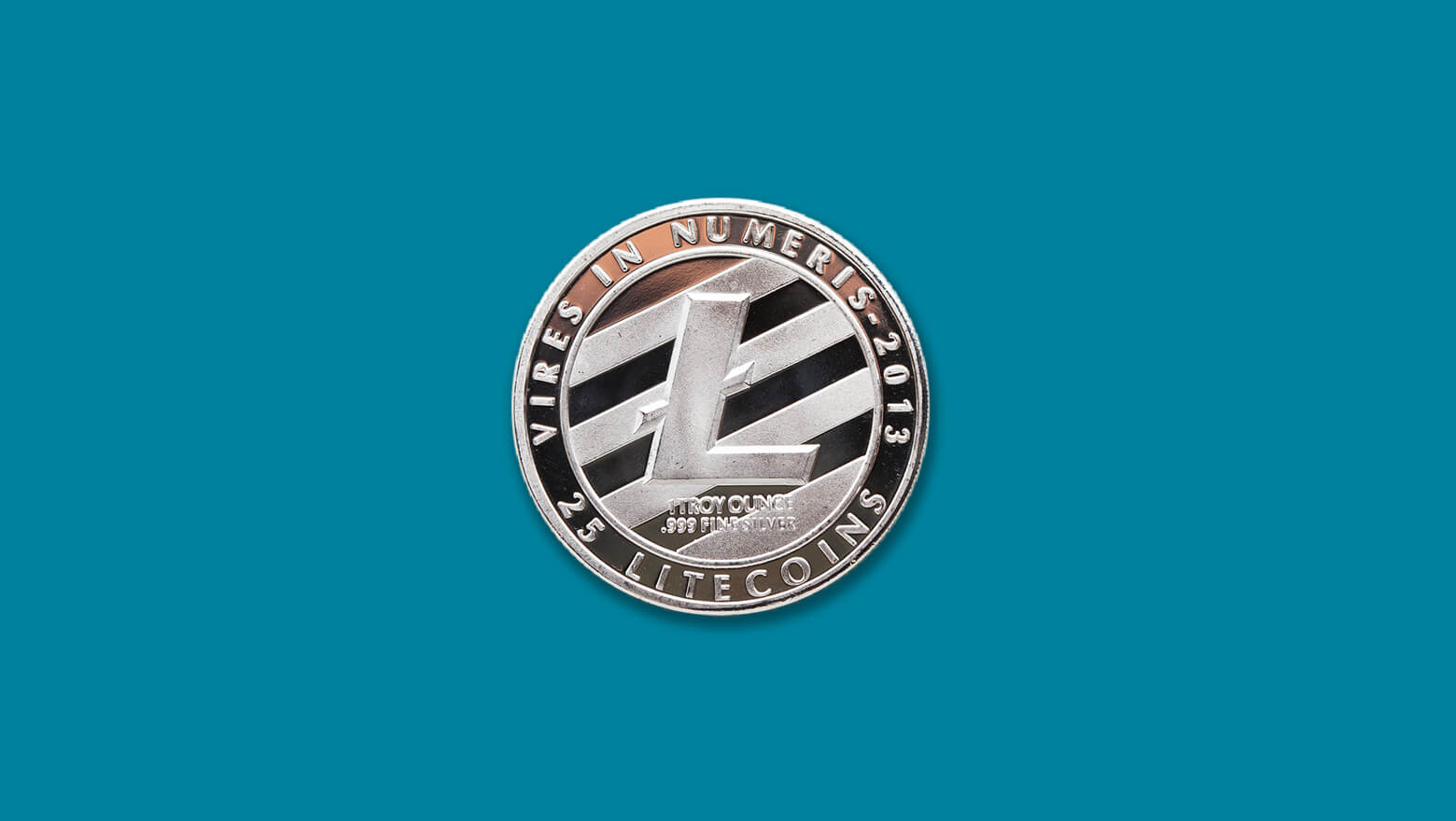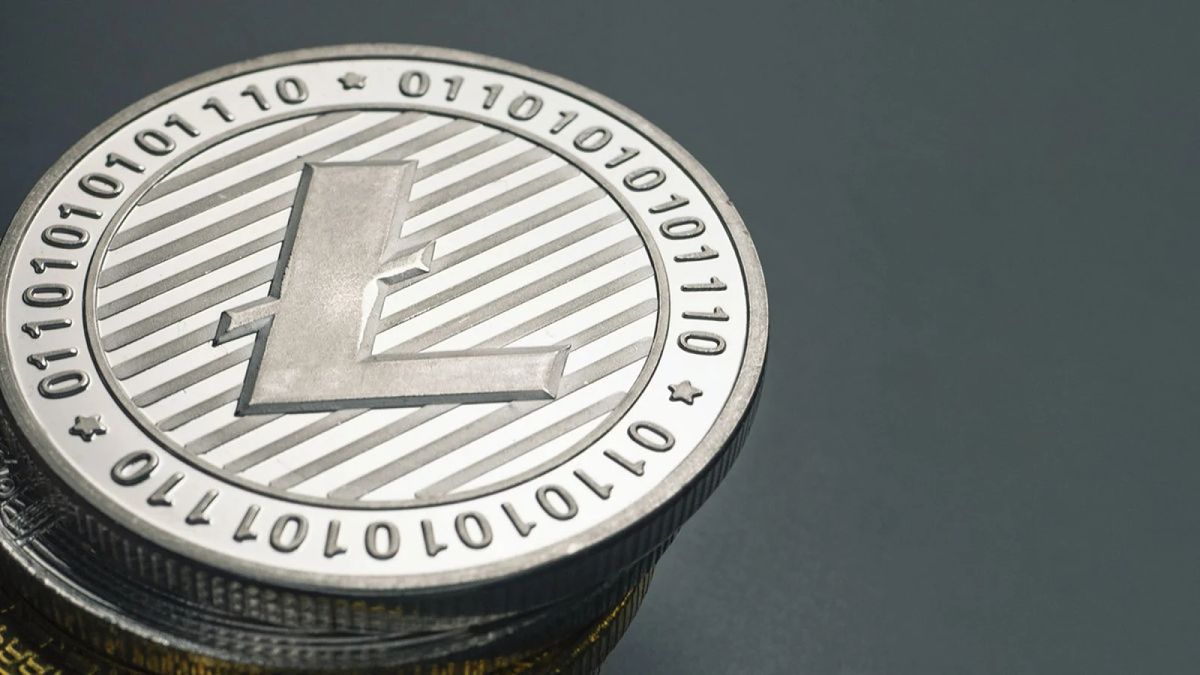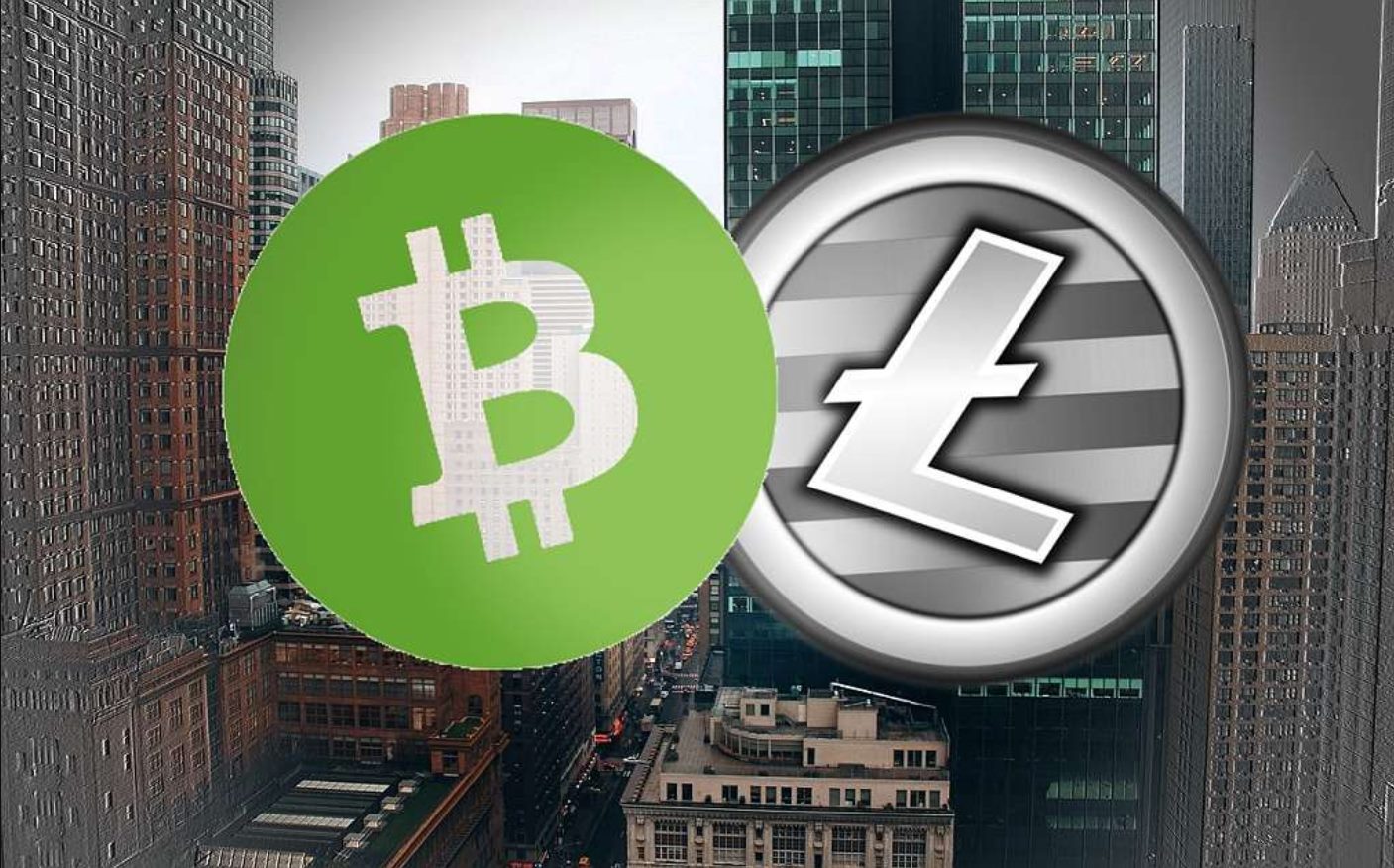Introduction
Welcome to the world of Litecoin! In this article, we will explore the fascinating characteristics of Litecoin and how it sets itself apart from other cryptocurrencies. Whether you’re a seasoned cryptocurrency enthusiast or just starting your journey, understanding Litecoin is crucial in navigating the ever-evolving landscape of digital currencies.
Created by Charlie Lee in 2011, Litecoin quickly gained popularity as a peer-to-peer cryptocurrency that operates on blockchain technology. It was designed to overcome some of the limitations of its predecessor, Bitcoin, and provide users with faster transaction confirmation times and a more efficient mining process.
With the growing interest in cryptocurrencies, Litecoin has emerged as one of the leading digital assets in the global market. As of this writing, it holds a prominent position in terms of market capitalization, making it a valuable asset to investors and individuals seeking to transact securely and swiftly.
Now, let’s delve deeper into the key features that make Litecoin unique and appealing to users worldwide. From its blockchain technology to its mining process and wallet options, we will explore the various aspects that contribute to Litecoin’s success in the crypto industry.
So, fasten your seatbelts as we embark on an exciting journey into the world of Litecoin!
What is Litecoin?
Litecoin is a decentralized digital currency that operates on a peer-to-peer network, allowing users to send and receive payments securely and efficiently. It was created by Charlie Lee, a former Google engineer, and was released as an open-source project in October 2011. Litecoin is often referred to as “silver” to Bitcoin’s “gold,” highlighting its position as a valuable alternative to the dominant cryptocurrency.
Similar to Bitcoin, Litecoin is based on blockchain technology. The blockchain serves as a public ledger that records all transactions made with the cryptocurrency. However, Litecoin offers several distinct features that set it apart.
One of the key differences between Litecoin and Bitcoin is the hashing algorithm. While Bitcoin utilizes the SHA-256 algorithm, Litecoin uses a unique algorithm known as Scrypt. This algorithm allows Litecoin to achieve faster block generation times and confirm transactions more quickly.
In addition to faster transaction confirmations, Litecoin has a maximum supply of 84 million coins, four times that of Bitcoin. This means that Litecoin has a higher supply, which may make it more accessible for users who want to acquire coins at a lower price point.
Furthermore, Litecoin was one of the first cryptocurrencies to implement Segregated Witness (SegWit). SegWit is a protocol upgrade that improves scalability and reduces transaction fees. By separating transaction signatures from the transaction data, SegWit increases the capacity of each block, allowing for more transactions to be processed.
Litecoin has also pioneered the concept of atomic swaps, which enable trustless and seamless transactions between different cryptocurrencies. With atomic swaps, users can exchange Litecoin for other cryptocurrencies without relying on centralized exchanges, providing a more secure and efficient method of trading.
Overall, Litecoin offers a reliable and efficient alternative to traditional payment systems and other cryptocurrencies. Its innovative features, such as fast transaction confirmations, scalable technology, and atomic swaps, make it a compelling choice for individuals and businesses alike.
Blockchain Technology
At the core of Litecoin and other cryptocurrencies is blockchain technology. A blockchain is a decentralized and distributed public ledger that records all transactions made with the cryptocurrency. It serves as a transparent and secure system, providing users with the ability to verify and validate transactions without the need for intermediaries.
The blockchain operates on a network of computers, known as nodes, that work together to validate transactions and add new blocks to the chain. Each block contains a set of transactions, timestamped and linked to the previous block, forming a continuous and immutable record of transactions.
One of the key advantages of blockchain technology is its transparency. Since all transactions are recorded on the blockchain, anyone can view the transaction history, enhancing trust and accountability. This transparency also helps prevent fraud and manipulation, as any unauthorized changes to the blockchain would require the consensus of the majority of nodes.
Blockchain technology also ensures security by utilizing cryptographic techniques. Transactions on the blockchain are verified using complex mathematical algorithms, making it nearly impossible to alter or tamper with the data. Additionally, the decentralized nature of the blockchain reduces the risk of a single point of failure or hacking, making it a robust and secure system for digital transactions.
Another significant aspect of blockchain technology is its efficiency. Traditional financial transactions, such as wire transfers or international payments, often involve intermediaries, multiple verification steps, and lengthy settlement times. In contrast, blockchain technology allows for near-instantaneous transfer of funds, eliminating the need for intermediaries and reducing transaction costs.
Moreover, the decentralized nature of blockchain technology empowers individuals by providing them with control over their financial assets. Users of cryptocurrencies like Litecoin have their private keys, which are used to access and manage their funds on the blockchain. This eliminates the need for traditional banking institutions and gives individuals greater autonomy and financial sovereignty.
In summary, blockchain technology is the foundation that powers cryptocurrencies like Litecoin. Its decentralized and transparent nature, coupled with the use of cryptography, ensures trust, security, and efficiency in digital transactions.
Proof of Work (PoW) Algorithm
Proof of Work (PoW) is a consensus algorithm used by cryptocurrencies like Litecoin to validate transactions and secure the network. The PoW algorithm requires participants, known as miners, to solve complex mathematical puzzles in order to add new blocks to the blockchain.
When a transaction is made on the Litecoin network, it is grouped with other pending transactions into a block. Miners compete to find a valid hash that meets certain criteria, making the block valid. This process requires substantial computational power and energy consumption.
Miners use specialized hardware, known as mining rigs or ASICs (Application-Specific Integrated Circuits), to perform the calculations required to solve the mathematical puzzle. Once a miner successfully finds a valid hash, they announce it to the network, and other nodes verify the validity of the block.
The first miner to find a valid hash and have their block verified by the network is rewarded with a certain number of Litecoins as an incentive for their efforts. This process of rewarding miners is known as mining rewards and plays a crucial role in the security and decentralization of the Litecoin network.
The PoW algorithm ensures the integrity of the blockchain by making it computationally expensive to modify past transactions. If a malicious entity wanted to tamper with a transaction, they would need to control the majority of the network’s computational power, known as a 51% attack.
By requiring miners to solve complex mathematical puzzles, PoW also helps prevent spam and denial-of-service attacks on the network. In order to add blocks to the blockchain, miners must invest computational resources, making it economically infeasible for attackers to flood the network with spam transactions.
While PoW has proven to be a reliable and secure algorithm, it is not without its drawbacks. One of the main concerns is the significant energy consumption associated with mining. The computational power required to solve the puzzles consumes a large amount of electricity, leading to environmental concerns.
Despite these challenges, the PoW algorithm has been the backbone of many successful cryptocurrencies, including Litecoin. It ensures the security, decentralization, and integrity of the blockchain, making it a crucial component of the cryptocurrency ecosystem.
Scrypt Algorithm
The Scrypt algorithm is a key feature that sets Litecoin apart from other cryptocurrencies. It is the hashing algorithm used by Litecoin for its Proof of Work (PoW) consensus mechanism. Developed by Colin Percival in 2009, Scrypt was specifically designed to be memory-hard, which makes it resistant to ASIC-based mining.
The Scrypt algorithm is an important innovation that addresses some of the limitations of Bitcoin’s SHA-256 algorithm. It allows for faster block generation times and more efficient mining, making Litecoin a more viable option for daily transactions.
One of the key advantages of the Scrypt algorithm is its memory-intensive nature. While SHA-256-based cryptocurrencies can be mined using specialized hardware called ASICs, Scrypt was designed to require a significant amount of memory in addition to computational power. This memory requirement makes it more difficult and less economically viable to develop ASICs tailored for Scrypt-based cryptocurrencies like Litecoin.
By making ASIC mining less viable, Scrypt promotes a more decentralized mining ecosystem. It allows for a broader range of individuals to participate in the mining process using consumer-grade hardware, such as CPUs and GPUs. This decentralization is vital for maintaining the integrity and security of the network, as it prevents control of the network from being concentrated in the hands of a few powerful mining operations.
The Scrypt algorithm also contributes to faster block generation times compared to Bitcoin’s SHA-256. While Bitcoin takes an average of 10 minutes to generate a new block, Litecoin’s Scrypt-based algorithm targets a block time of 2.5 minutes. This means that Litecoin transactions are confirmed more quickly, allowing for faster and smoother transactions on the network.
Furthermore, the Scrypt algorithm provides an added layer of protection against potential attacks. Its memory-hard nature makes it more resistant to brute-force attacks and requires a large amount of memory to compute the hashing functions. This adds an additional level of security to the network and makes it more resilient to potential threats.
Overall, the Scrypt algorithm is a crucial component of Litecoin’s success and differentiation in the cryptocurrency market. Its memory-intensive nature, efficient mining process, and faster block generation times have contributed to the widespread adoption and popularity of Litecoin as a fast and secure digital currency.
Segregated Witness (SegWit)
Segregated Witness (SegWit) is a protocol upgrade that was first introduced by the Bitcoin development community and later adopted by Litecoin. It aims to improve scalability, reduce transaction fees, and enhance the overall functionality of the cryptocurrency network.
Traditionally, transaction data in blockchain networks includes both the transaction information and the accompanying digital signatures. However, with SegWit, these digital signatures, also known as the witness data, are separated or “segregated” from the transaction data.
By separating the witness data from the transaction data, the block size limit can effectively be increased, allowing for more transactions to be included within each block. This increase in block capacity helps alleviate network congestion and reduces transaction fees, making Litecoin a more cost-effective and efficient digital currency for users.
SegWit achieves this by implementing a new transaction format. In this new format, the witness data is moved to a separate part of the transaction known as the witness block. This separation allows the witness block to be discounted when calculating the overall transaction size, enabling more transactions to fit within the limited block space.
In addition to increasing transaction capacity, SegWit also provides several other benefits. It enhances network security by reducing the potential for transaction malleability, a vulnerability that could allow malicious actors to modify transaction IDs. By separating the witness data, the transaction ID becomes more resistant to manipulation.
Furthermore, SegWit enables the implementation of other innovative technologies, such as the Lightning Network. The Lightning Network is a second-layer solution that aims to address the scalability limitations of blockchain networks by enabling off-chain transactions. By utilizing SegWit, the Lightning Network can take full advantage of its benefits, including faster and more cost-effective transactions.
Since its adoption, SegWit has proven to be a significant advancement for Litecoin and other cryptocurrencies. It has improved network efficiency, reduced transaction fees, enhanced security, and paved the way for further developments in scaling solutions. As the cryptocurrency ecosystem continues to grow, SegWit remains a vital piece of technology for optimizing blockchain networks.
Atomic Swaps
Atomic swaps, also known as cross-chain atomic swaps, are a revolutionary development in the world of cryptocurrencies. They enable trustless and seamless transactions between different blockchains, allowing users to exchange cryptocurrencies without the need for intermediaries or centralized exchanges.
The concept of atomic swaps is based on the use of smart contracts, which are self-executing contracts with the terms of the agreement directly written into code. These smart contracts facilitate the exchange of assets between parties without the need for a trusted third party.
With atomic swaps, users can exchange cryptocurrencies directly on-chain, ensuring transparency and security throughout the process. The swaps require both parties to agree on the terms and conditions of the transaction, including the exchange rate and the amount to be exchanged.
Atomic swaps rely on the concept of Hash Time-Locked Contracts (HTLCs) to ensure that the swap process is fair and cannot be manipulated by either party. HTLCs involve the use of time-locks and hash locks to guarantee that the transaction will only occur if both parties meet the agreed-upon conditions within a specified time frame.
One of the significant advantages of atomic swaps is that they eliminate the need for intermediaries or centralized exchanges. This reduces counterparty risk and provides users with greater control over their assets. Atomic swaps also eliminate the need for multiple transactions and associated fees, making it a cost-effective solution for exchanging cryptocurrencies.
Atomic swaps hold great potential for the cryptocurrency ecosystem as they facilitate interoperability between different blockchains. Users can exchange cryptocurrencies without relying on centralized exchanges that often require lengthy verification processes and may be vulnerable to hacks or other security risks.
Litecoin has played a significant role in advancing the adoption of atomic swaps. It has been at the forefront of implementing this technology and enabling seamless cross-chain transactions. The ability to perform atomic swaps with Litecoin allows users to diversify their holdings, access liquidity, and explore new blockchain projects without the hassle of going through a centralized exchange.
Atomic swaps represent a key step towards achieving a more decentralized and interconnected cryptocurrency ecosystem. As this technology continues to develop and becomes more widely adopted, it has the potential to revolutionize the way cryptocurrencies are exchanged and increase the overall efficiency and security of peer-to-peer transactions.
Lightning Network
The Lightning Network is a second-layer solution built on top of blockchain networks like Litecoin. It aims to address the scalability limitations of blockchain technology by enabling off-chain transactions. By moving transactions off the main blockchain, the Lightning Network allows for faster, more cost-effective, and scalable transactions.
Traditional blockchain networks, like Litecoin, face challenges when it comes to processing a high volume of transactions. As the number of users and transactions increases, the limited block size and the time required to confirm each transaction can lead to bottlenecks and higher fees.
The Lightning Network solves this problem by creating a network of payment channels that are off-chain. Users can open these payment channels with each other, allowing them to conduct a virtually unlimited number of transactions without burdening the main blockchain. These transactions are only recorded on the blockchain when the payment channel is closed, resulting in significant scalability improvements.
The Lightning Network utilizes smart contracts to facilitate secure and instant transactions between participants. These smart contracts ensure that participants can trust each other and that the transactions are executed as agreed upon.
One of the key benefits of the Lightning Network is its ability to provide near-instantaneous transactions. Since the transactions occur off-chain, they are not subject to the confirmation times and network congestion that can slow down transactions on the main blockchain.
Another advantage of the Lightning Network is the reduction in transaction fees. By conducting transactions off-chain, users can avoid the fees typically associated with on-chain transactions. The Lightning Network also enables micropayments, allowing for transactions of very small amounts that would not be economically feasible on the main blockchain.
The Lightning Network also enhances privacy and fungibility. Since most transactions occur off-chain, they are not publicly visible on the blockchain. This provides users with an added layer of privacy, as only the participants involved in the transaction have access to the details of the exchange.
Litecoin has embraced the Lightning Network, becoming one of the first cryptocurrencies to enable its use. By integrating the Lightning Network, Litecoin has significantly improved its scalability and transaction efficiency, making it a more viable option for everyday payments.
As the Lightning Network continues to mature and gain broader adoption, it has the potential to revolutionize the way cryptocurrencies are used for everyday transactions. With its scalability, instant transactions, and cost-effectiveness, the Lightning Network brings new possibilities for the mainstream adoption of cryptocurrencies like Litecoin.
Litecoin Mining
Litecoin mining is the process of validating and securing transactions on the Litecoin blockchain by solving complex mathematical puzzles. Miners play a crucial role in maintaining the integrity of the network and are rewarded with newly minted Litecoins for their efforts.
Similar to Bitcoin, Litecoin mining utilizes a Proof of Work (PoW) consensus algorithm. Miners compete with each other to solve mathematical problems, known as hashes, in order to add new blocks to the blockchain.
In the early days of Litecoin, mining could be done using consumer-grade CPUs (Central Processing Units). However, as the network grew and mining became more competitive, miners started using more powerful hardware, such as GPUs (Graphics Processing Units), and eventually specialized ASICs (Application-Specific Integrated Circuits).
ASIC mining has become the dominant method for mining Litecoin due to its superior hashing power and energy efficiency. These dedicated mining rigs are specifically designed to perform the complex calculations required to validate transactions and secure the network.
Litecoin uses the Scrypt algorithm for mining. The Scrypt algorithm is memory-intensive, making it resistant to ASIC mining. This ensures a more decentralized mining ecosystem, as it allows miners with consumer-grade hardware like GPUs to still participate and compete in the mining process.
The mining process involves miners racing to find a hash that meets certain criteria and satisfies the network’s difficulty level. The miners’ computational power determines their chances of finding a valid hash, and the first miner to find one announces it to the network and adds a new block containing the validated transactions to the blockchain.
Miners are rewarded with a certain amount of Litecoins for each block they successfully mine. This mining reward serves as an incentive for miners to continue securing the network and validating transactions. As of now, the mining reward for successfully mining a new Litecoin block is 12.5 Litecoins.
While mining can be a profitable endeavor, it is not without challenges. The increasing difficulty level and the need for specialized hardware make it harder for individual miners to compete against larger mining operations. Additionally, the energy consumption associated with mining can be significant, resulting in higher operating costs and environmental concerns.
Litecoin mining requires a mining software, a wallet to store the mined coins, and joining a mining pool or mining solo. Mining pools allow miners to combine their hashing power and work together to increase their chances of finding blocks and earning rewards.
Overall, Litecoin mining plays a vital role in maintaining the security and integrity of the network. It allows users to participate in the validation process and earn Litecoins as a reward for their contribution.
Litecoin Wallets
Litecoin wallets are digital tools that allow users to securely store, manage, and transact with their Litecoin holdings. Just like with any cryptocurrency, it is essential to have a reliable and secure wallet to ensure the safety of your coins.
There are various types of Litecoin wallets available, each with its own features and security measures. Here are some of the most common types:
1. Desktop Wallets: These wallets are software applications that you can install on your desktop or laptop computer. They offer full control over your private keys and provide a secure way to manage your Litecoin funds. Examples of popular desktop wallets include Litecoin Core and Exodus Wallet.
2. Mobile Wallets: These wallets are designed for use on mobile devices, such as smartphones and tablets. They offer convenience and portability, allowing you to manage your Litecoins on the go. Electrum-LTC and LoafWallet are popular mobile wallet options for Litecoin.
3. Web Wallets: Web wallets are online wallets that store your Litecoin keys on a remote server. They can be accessed through a web browser and offer convenience, as you can access your funds from any device with an internet connection. However, web wallets are considered less secure than offline wallets, as they are susceptible to hacking and other online security threats. Examples of web wallets supporting Litecoin include LiteVault and Coinomi.
4. Hardware Wallets: Hardware wallets are physical devices specifically designed to secure cryptocurrency holdings. They store your private keys offline and provide an extra layer of security, as they are protected from malware and hacking attempts. Leading hardware wallet brands such as Ledger and Trezor offer support for Litecoin.
It is important to choose a wallet that suits your needs and prioritizes security. Regardless of the wallet type you choose, it is crucial to follow best practices, such as regularly backing up your wallet, enabling two-factor authentication (2FA), and keeping your software up to date.
When selecting a wallet, it is also essential to consider its compatibility with your operating system and its user-friendly interface. Some wallets offer additional features, such as integration with decentralized exchanges or multi-currency support, which may be beneficial if you have diverse cryptocurrency holdings.
Lastly, be cautious of phishing attempts and only download wallets from trusted sources. Scammers may create fake wallets to steal your private keys and gain access to your funds. It is recommended to verify the authenticity of the wallet provider and double-check the URL before downloading any wallet software.
By choosing a secure and reliable Litecoin wallet, you can have peace of mind knowing that your Litecoins are protected and easily accessible whenever you need them.
Conclusion
Litecoin has established itself as a prominent cryptocurrency with unique features and a dedicated community. With its faster block confirmation times, efficient Scrypt algorithm, and innovative technologies like Segregated Witness (SegWit) and the Lightning Network, Litecoin offers a compelling alternative to traditional payment systems and other cryptocurrencies.
The Scrypt algorithm ensures that Litecoin mining remains decentralized and accessible to a broader range of individuals, while the Lightning Network addresses the scalability challenges faced by blockchain networks, enabling faster and more cost-effective transactions.
Litecoin’s commitment to innovation is further evidenced by its support for atomic swaps, which facilitate trustless and seamless cross-chain transactions between cryptocurrencies. This advancement promotes interoperability and eliminates the need for intermediaries or centralized exchanges.
As with any cryptocurrency, it is crucial to exercise caution and use secure Litecoin wallets to safeguard your coins. Whether you choose a desktop, mobile, web, or hardware wallet, ensure that you follow best practices and keep your private keys secure.
Litecoin continues to evolve and adapt to meet the changing needs of users and the broader cryptocurrency ecosystem. Its emphasis on speed, security, and decentralization positions it as a strong contender for everyday transactions and a valuable asset in the expanding digital currency market.
So, whether you are looking to transact swiftly and securely, explore cross-chain transactions, or participate in the mining process, Litecoin offers a compelling solution. Embrace the possibilities of Litecoin and join the ever-growing community in shaping the future of finance.

























